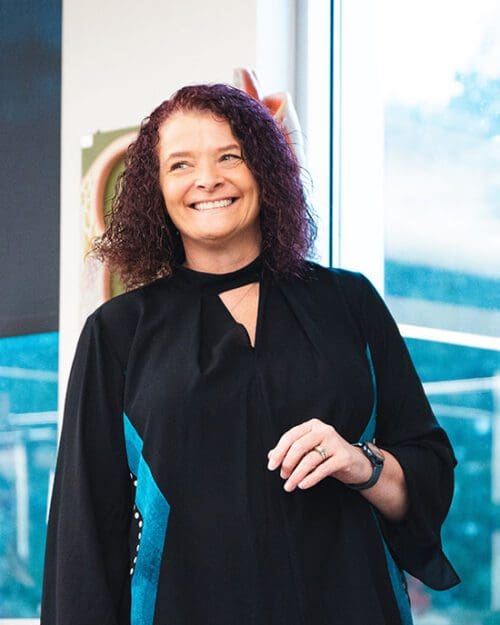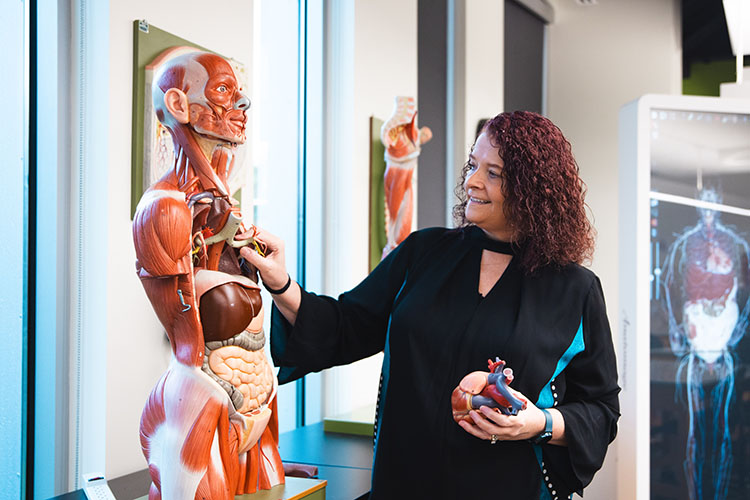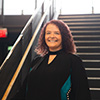Inspiring the Next Generation

Pride of PNW: Julia Rogers
Julia Rogers, assistant professor of Nursing, explores the intricate world of the human body and the path to disease by integrating augmented reality into learning.
She collaborated with faculty and students in PNW’s department of Computer Science to successfully design, develop and implement an innovative, interactive, 3D visualization learning tool on chronic obstructive pulmonary disease and Parkinson’s disease in both augmented reality and virtual reality.
With the help of $40,000 in research grants, Rogers studied the role of augmented and virtual reality in classroom learning for Nursing students. Her research revealed students are able to retain information when exposed to 3D visualizations as a learning tool, which led to improved exam scores. The new 3D visualization Anatomage tables at PNW have proven invaluable for Rogers to teach students about pathophysiology.
Rogers uses the 3D detailed human science tables to provide an immersive and realistic experience for students. She is also integrating more diversity within the pathophysiology courses to ensure students are competent in recognizing and diagnosing skin conditions on diverse skin tones.
Currently, she is part of a research team that is designing a website to house diversified skin condition images for pedagogical education of future health care providers. Her ultimate goal as a professor is to “inspire students to be the change that transforms nursing.”
It’s great to see when a student really has a deeper understanding by visually seeing what goes on inside the body.
What piece of advice do you typically share with new students?
Focus on progression, not perfection. This is a time of learning and growth. Your grade will come with understanding, commitment, and dedication to getting the most out of your education.
Some days it will be truly amazing, some days it will be hard, some days will be full of joy, and some days may not. But no matter what the days bring you, stay on the path and keep putting one foot in front of the other. We are all here to help guide you on this educational journey.
What project has you most excited to come to PNW each day?
Teaching students about Pathophysiology using the 3D visualization tables. The visual helps students really put the pieces together of the whole body and see how one system interacts with another to disrupt the body’s steady state and cause disease. It’s great to see when a student really has a deeper understanding by visually seeing what goes on inside the body.
The Pride of PNW series highlights Purdue Northwest researchers, scientists and practitioners from around the world who are driving change in their fields.

